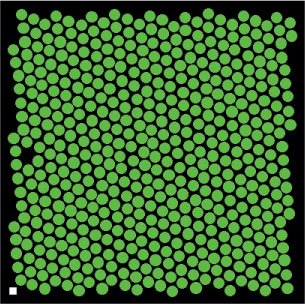Custom Assembly Nanotech Discovery
Nanotech discovery could have radical implications
Salvatore Torquato, a Princeton University scientist, is proposing turning a central concept of nanotechnology on its head. If the theory bears out it could have radical implications not just for industries like telecommunications and computers but also for our understanding of the nature of life.
Torquato and colleagues have published a paper in the Nov. 25 issue of Physical Review Letters, the leading physics journal, outlining a mathematical approach that would enable them to produce desired configurations of nanoparticles by manipulating the manner in which the particles interact with one another.
"In a sense this would allow you to play God, because the method creates, on the computer, new types of particles whose interactions are tuned precisely so as to yield a desired structure," said Pablo Debenedetti, a professor of chemical engineering at Princeton.
Nanotechnologists rely on something called "self-assembly." Self-assembly refers to the fact that molecular building blocks do not have to be put together in some kind of miniaturized factory-like fashion. Instead, under the right conditions, they will spontaneously arrange themselves into larger, carefully organized structures.
But Torquato and his colleagues, visiting research collaborator Frank Stillinger and physics graduate student Mikael Rechtsman, have taken an inverse approach to self-assembly.
Instead of employing the traditional trial-and-error method of self-assembly that is used by nanotechnologists and which is found in nature, Torquato and his colleagues start with an exact blueprint of the nanostructure they want to build.
They illustrated their technique by considering thin films of particles. If one thinks of the particles as pennies scattered upon a table, the pennies, when laterally compressed, would normally self-assemble into a pattern called a triangular lattice.

Triangular Lattice
But by optimizing the interactions of the "pennies," or particles, Torquato made them self-assemble into an entirely different pattern known as a honeycomb lattice (called that because it very much resembles a honeycomb).

Honeycomb Lattice
Nanotech discovery could have radical implications


0 Comments:
Post a Comment
<< Home